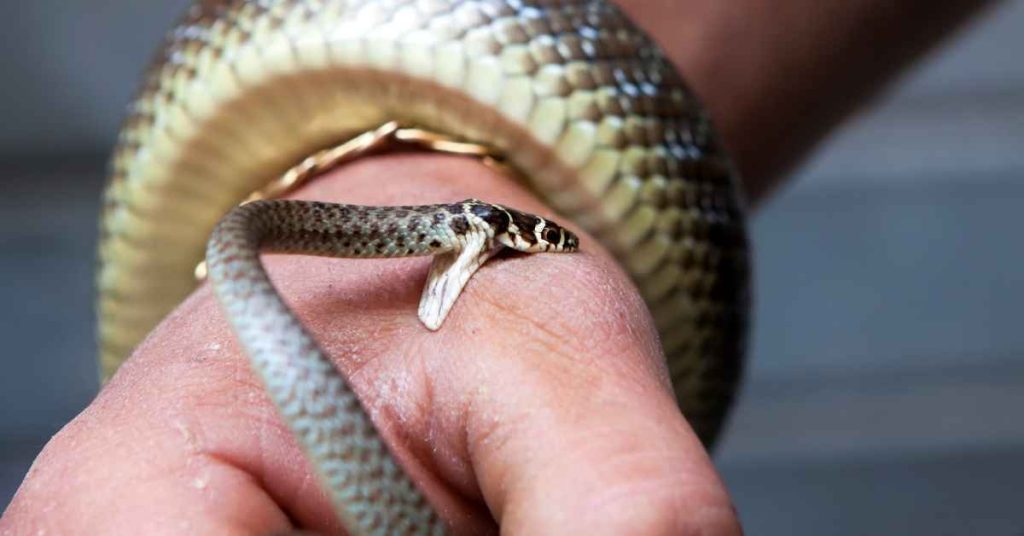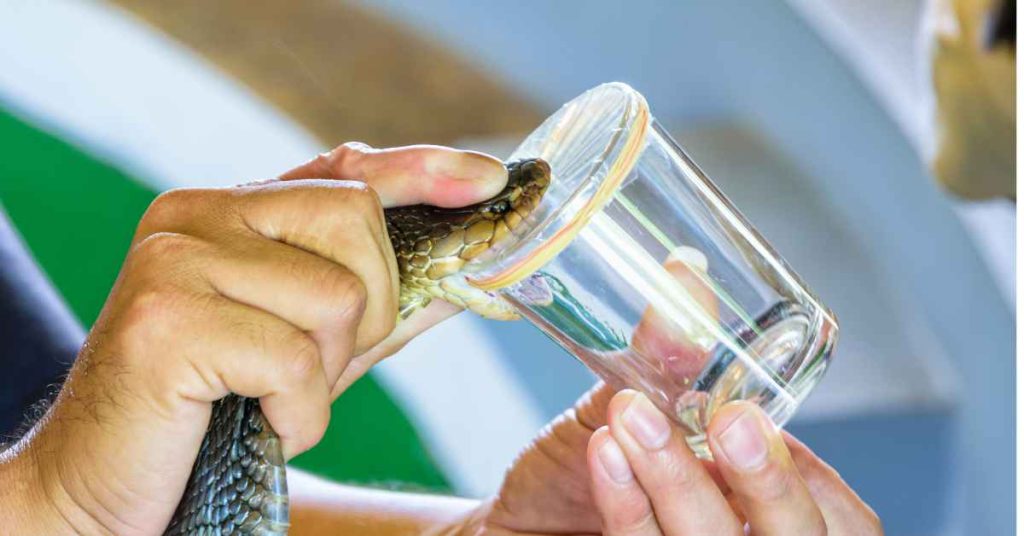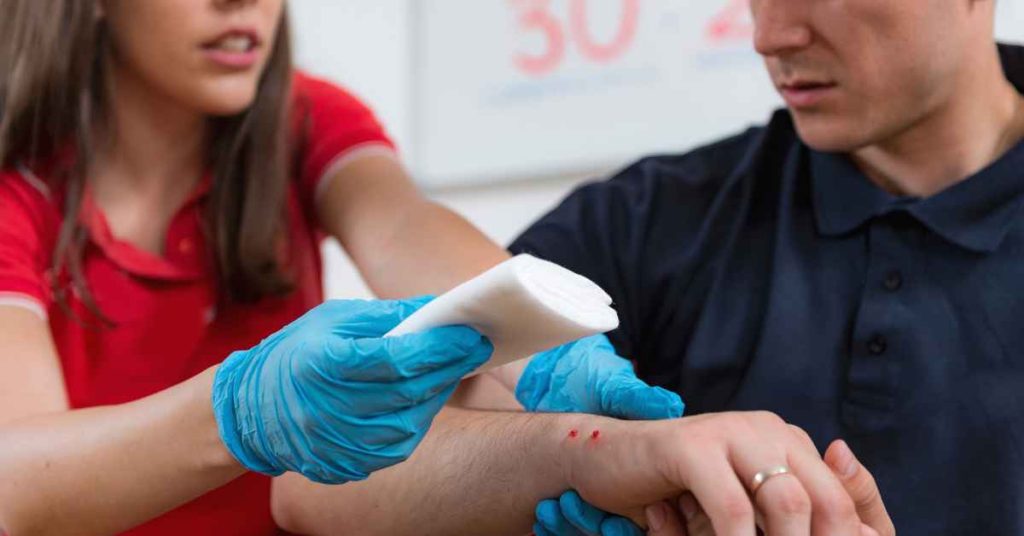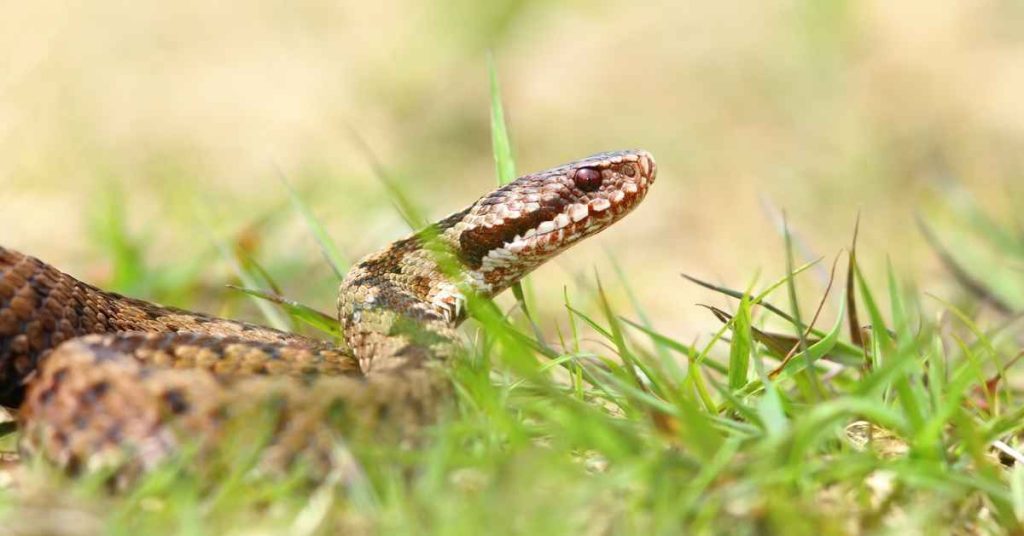Don’t Panic! How to Administer First Aid for Snake Bites

Understanding the first aid for snake bites is a crucial skill that can be lifesaving, especially in areas where snakes are prevalent.
Each year, thousands of people worldwide experience snake bites, and the outcomes can range from mild discomfort to severe medical emergencies, depending on the type of snake and the speed of treatment.
Knowing how to properly respond not only increases the chances of a positive outcome but also helps in managing the situation effectively until medical help is available.
Snake bites, while often not fatal, can cause serious harm, including tissue damage, paralysis, or severe allergic reactions. This makes it essential for individuals, particularly those in snake-inhabited regions or outdoor enthusiasts, to be aware of the correct first aid procedures and the potential dangers of snake bites.
Identifying a Snake Bite

Correctly identifying a snake bite is the first critical step in administering the right first aid. Snake bites can manifest in various ways, and recognizing their signs and symptoms is vital for a prompt and appropriate response. Symptoms can vary depending on whether the bite is from a venomous or non-venomous snake.
For venomous bites, symptoms can be more severe and immediate, while non-venomous bites tend to be less serious. Understanding these differences is key to assessing the situation correctly and taking the necessary actions to ensure the safety and well-being of the bite victim.
Recognizing the Signs and Symptoms of a Snake Bite
- Puncture marks at the wound site.
- Pain, swelling, and redness around the bite area.
- Nausea, vomiting, and difficulty breathing in more severe cases.
Differences Between Venomous and Non-Venomous Snake Bites
- Venomous bites often result in immediate pain, swelling, and visible symptoms.
- Non-venomous bites might not cause immediate or severe symptoms but can lead to infection.
- Venomous bites may show signs like bruising, blistering, and possibly systemic symptoms like altered mental state or shock.
Understanding Snake Venom and Its Effects
Snake venom is a complex mixture of proteins and enzymes, each with different effects on the human body. Understanding the nature of snake venom and its varied impacts is crucial in comprehending why snake bites can be so dangerous.
There are primarily two types of venom: neurotoxic and hemotoxic. Neurotoxic venom affects the nervous system, leading to paralysis, respiratory failure, and other neurological symptoms.
Hemotoxic venom, on the other hand, impacts the circulatory system, causing blood clotting disorders, tissue damage, and internal bleeding. The specific effects of venom can vary greatly depending on the snake species, the amount of venom injected, and the individual’s reaction to it.
This variability makes it essential to treat all snake bites seriously and seek immediate medical attention.

An Overview of Different Types of Snake Venom
- Neurotoxic venom: Affects the nervous system, potentially leading to paralysis and respiratory failure.
- Hemotoxic venom: Impacts blood cells and organs, causing clotting issues and tissue damage.
- Neurotoxic venom can result in symptoms like blurred vision, difficulty in speaking, and muscle weakness.
- Hemotoxic venom can lead to symptoms such as swelling, bruising, and in severe cases, organ failure.
- Both types of venom can cause systemic effects, such as shock, and require immediate medical intervention.
Immediate Steps to Take After a Snake Bite

When a snake bite occurs, the immediate actions taken can significantly impact the outcome.
- Avoid panicking to prevent the rapid spread of venom.
- Move away from the snake to a secure location to prevent further bites.
-
Immobilizing the Bitten Limb and Keeping It Below Heart Level
- Limit movement of the bitten limb to slow venom spread.
- Keep the bitten area lower than the heart to reduce blood flow to the bite.
- Remove rings, bracelets, and tight clothing to prepare for swelling.
- Ensure that the bite area is accessible for medical treatment.
-
Basic First Aid Steps to Minimize Venom Spread
- Keep the victim calm and still, as movement can increase heart rate and spread the venom faster.
- Position the bitten limb so that it’s at or slightly below heart level.
- Gently clean the bite area with soap and water if available, but avoid vigorous washing.
- Seek medical attention immediately as antivenom may be necessary.
What is the Pressure Immobilization Technique (PIT)?
It is a method of bandaging specifically employed for certain bites and stings. Apply a broad pressure bandage from the toes or finger tips upwards to th groin or arm pit. You shpould not be able to easily slide your finger under the bandage.
This helps to stop the venom infiltrating the lymphatic system.
PIT is recommended for incidents involving sea snakes, bites from:
- Any Australian snakes
- Blue-ringed octopuses
- Cone shell snails
However, it is crucial not to employ PIT in cases of:
- Spider bites (excluding funnel web spiders)
- Jellyfish stings
- Stonefish encounters
- Or stings from insects like bees, wasps, and beetles, among others
What Not to Do After a Snake Bite
In the event of a snake bite, it’s just as important to know what not to do as it is to know the correct first aid steps. Many myths and misconceptions surround the treatment of snake bites, and following these can often worsen the situation.
Actions such as trying to suck out the venom, applying a tourniquet, or cutting the bite area, which are commonly portrayed in movies and folklore, can be harmful and are strongly discouraged by medical professionals. Understanding why these actions are detrimental is crucial in managing snake bite situations effectively and preventing further harm to the victim.
Debunking Common Myths and Misconceptions
- Do not attempt to suck out the venom, as it’s ineffective and can cause more harm.
- Avoid applying ice or a tourniquet, as these can restrict blood flow and worsen tissue damage.
- Do not cut into the bite area, which can increase the risk of infection and cause more injury.
Explaining Why Certain Actions Can Worsen the Situation
- Sucking out venom can introduce bacteria to the wound and doesn’t remove a significant amount of venom.
- Using a tourniquet or applying ice can lead to tissue necrosis and damage around the bite area.
- Cutting the bite area increases the risk of infection and complications without providing any benefit.
Prevention Tips for Snake Bites

Preventing snake bites is fundamentally about awareness and precaution, especially in areas known for snake activity. By following certain safety practices and being vigilant in potentially snake-prone environments, the risk of encountering a snake bite can be significantly reduced.
This includes being mindful of where you walk or place your hands, as snakes often hide in underbrush, tall grass, or rocks.
Wearing protective clothing and gear is also a key preventative measure, as it can provide a physical barrier against bites. Understanding and respecting snake habitats, as well as exercising caution in outdoor activities, are essential in minimizing the likelihood of snake encounters and potential bites.
Safe Practices When in Snake-Prone Areas
- Stay on well-traveled paths and clear trails while hiking or walking.
- Avoid reaching into areas where visibility is limited, such as bushes or piles of leaves.
- Be cautious around water sources and rocky sunning spots, common areas for snakes.
Wearing Protective Clothing and Being Aware of One’s Surroundings
- Wear long pants and thick boots when walking in areas where snakes may be present.
- Use a stick to probe the ground ahead in tall grass or underbrush.
- Remain vigilant and continuously scan your surroundings, especially in wilderness areas or places known for snake populations.
The First Aid Nest run public and workplace first aid courses, Australia wide.
Our workplace first aid courses can be run at your site.
Our public classes are here in Sydney and are the best option if you are an individual, a couple or a group
of just a few people.
Our sophisticated system will take the headache out of renewal for you too. Lose your certificate? No problem, just log in and download your certificate again anytime. We will also send you reminders about when your certificate is about to expire!
Book your spot or workplace with us today, contact us with any questions, or head to our FAQ page.
